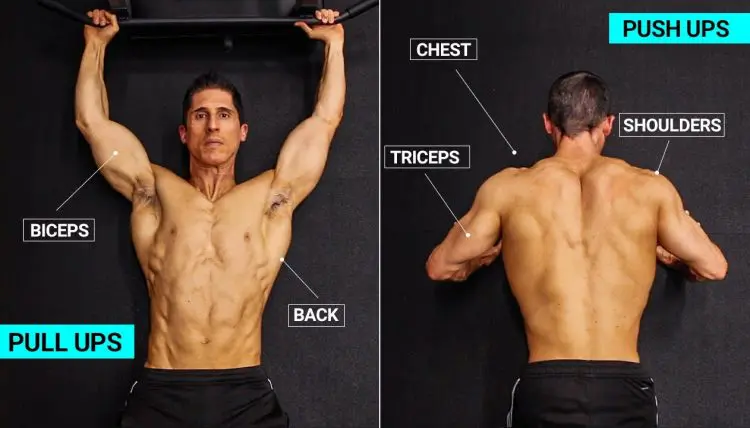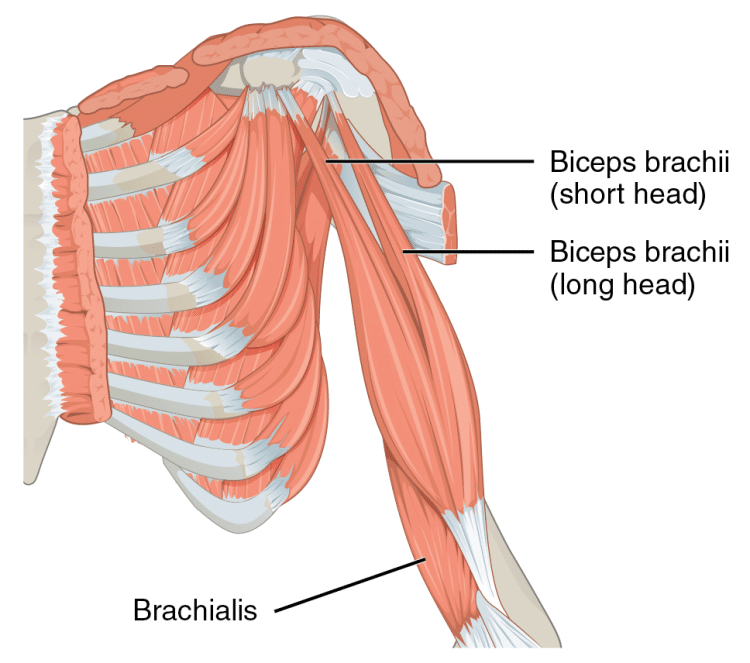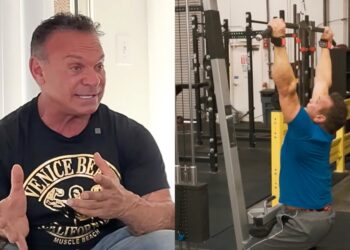We have a saying in the fitness industry: If you always do what you’ve always done, you’ll always get what you always got. While this might sound like some kind of crazy tongue-twister, it actually explains why so many bodybuilders and exercisers are stuck in a training rut.
Your body is a master of adaptation. When you do a new exercise or workout, it responds by getting stronger and building new muscle tissue. But, once the initial shock wears off and your body gets used to your new training regimen, your progress slows down and may eventually grind to a halt.
A lot of lifters stick with the same workout long past its “best by” date and are using programs that, while once productive, no longer trigger increases in strength or muscle mass.
The best way to avoid training plateaus and ruts is to change your workouts every 6-8 weeks or anytime you notice that your progress has stalled.
That doesn’t mean changing your workouts every week. Jumping from plan to plan can be as detrimental to your progress as never changing your workout. Instead, you need to give a new training plan time to work.
But, as another saying goes, there is no point flogging a dead horse, and if your current program has stopped working, it’s time for a change!
Level Up Your Fitness: Join our 💪 strong community in Fitness Volt Newsletter. Get daily inspiration, expert-backed workouts, nutrition tips, the latest in strength sports, and the support you need to reach your goals. Subscribe for free!
In this article, we’re going to share gym and home supersets biceps workouts designed to reignite biceps growth. So, if your arms have stopped growing, give these workouts a try.
What Are Supersets, Anyway?
Bodybuilders use training systems to increase the intensity of their workouts and bust through training ruts. Examples include:
- Drop sets
- Pyramids
- Negatives
- Forced reps
- Giant sets
- Supersets…
Supersets involve doing two exercises back-to-back. For example, you could do a set of push-ups immediately followed by a set of pull-ups.

Supersets can make your workouts shorter, as cut the amount of time you spend resting in half. They’re also great for raising the intensity of your workouts and forcing your muscles to work harder than usual. For this reason, supersets are an excellent way to bust out of a training rut.
There are several different types of supersets, all of which can be very beneficial.
Recognized superset variations include:
- Push/pull supersets
- Push/push supersets
- Pull/pull supersets
- Upper body/lower body supersets
- Pre and post-exhaust supersets
- Strength and power supersets
- Strength and cardio supersets
You can read more about supersets in our in-depth guide.
Doing back-to-back biceps exercises will increase time under tension, trigger a skin-splitting pump, and challenge your muscles in an entirely new way to produce new muscle growth.
However, to be effective, during supersets, you MUST move quickly from one exercise to the next. Rests are not permitted between paired superset exercises. You should only rest after you’ve completed the second exercise of each superset.
In workout plans, paired exercises are usually designed as a) and b), e.g., 1a and 1b, to show that those exercises are to be done as a superset.
Biceps Anatomy
While you don’t need a degree in anatomy to build stronger, more muscular biceps, knowing a little more about how this crucial muscle works will help explain why some exercises are better than others for sculpting impressive guns.
The full name of the biceps is biceps brachii, meaning two-headed arm muscle. This refers to how the biceps are made up of two distinct parts, which anatomists call heads.
The biceps have two origins, which means they have two uppermost attachment sites. The short head originates on the scapula or shoulder blade, while the long head originates just above the shoulder joint. These two attachments merge to form a single muscle belly, which inserts onto the radius, which is the larger of your two forearm bones.
The biceps are a biarticular muscle which means it crosses two joints – the shoulder and the elbow. Because of this, it affects both of these joints, although its effect on the shoulder is relatively weak.
The biceps have three functions:
- Flexion of the elbow – bending your arm
- Supination of the forearm – turning your palm upwards
- Flexion of the shoulder – raising your arm forward
All this means that if you want to build the best arms possible, you need to use a variety of exercises and hit your arms from several different angles, ensuring you involve all three of these functions in your workouts.
Supersets are one of the best ways to achieve this goal.
Biceps Superset Workout – Gym Edition
This workout is designed to be done in a well-equipped gym. Do it once or twice a week as part of a split routine. But, before you even think about laying your hands on any weights, make sure you prepare your muscles and joints by warming up.
Do 5-10 minutes of light cardio followed by some dynamic mobility and flexibility exercises for your upper body and lower back.
Ready? Then let’s get to work and build those biceps!
Biceps Superset Workout – Gym Edition
| # | Exercise | Sets | Reps | Recovery |
| 1a | Strict barbell curl | 3 | 6-8 | 2 minutes |
| 1b | Cheat barbell curl | |||
| 2a | Spider dumbbell curl | 3 | 8-10 | 90 seconds |
| 2b | Incline dumbbell curl | |||
| 3a | Reverse barbell curl | 2 | 10-12 | 60 seconds |
| 3b | Hammer dumbbell curl | |||
| 4a | Chin-up (drop set) | 1 | AMRAP | N/A |
| 4b | Cable curl (drop set) |
All exercises designated as a) and b) are to be performed as a superset. So, do a set of exercise 1a and then, without resting, immediately do a set of exercise 1b. Rest for the prescribed time and then repeat the pairing for the specified number of supersets. Do all paired exercises in this way.
Exercise Instructions
When it comes to getting the most from any exercise, you need to perform it correctly. Good exercise form keeps the tension on the target muscles, minimizes momentum, and takes unwanted stress away from your joints.
So, given a choice, always train using good form – your muscles and joints will thank you!
1a. Strict barbell curl
Strict barbell curls are a very pure biceps exercise that stops you from using your legs or back to lift the weight. This is the curling variation that’s used in strict curl competitions. Don’t worry – your next exercise uses looser form so you can push your biceps to their very limit.
How to do it:
Level Up Your Fitness: Join our 💪 strong community in Fitness Volt Newsletter. Get daily inspiration, expert-backed workouts, nutrition tips, the latest in strength sports, and the support you need to reach your goals. Subscribe for free!
- Place your loaded barbell on a raised platform in front of your chosen wall. Most lifters use an EZ baras they’re generally more comfortable.
- Hold the barbell with a medium underhand grip.
- Unrack the bar and lean against a flat, smooth wall. Your butt and upper back should be in constant contact with the wall, but your head and arms are free to move. Your feet should be about 12-inches from the wall.
- Without using your legs or moving your butt or upper back away from the wall, bend your arms and curl the bar up to your chin.
- Lower the weight under control and repeat.
1b. Cheat barbell curl
After doing strict curls, your biceps should be feeling pretty tired, but they still have more to give. From strict curls, immediately transition into cheat curls to push your biceps even harder and further into failure. Use the same bar – there is no need to adjust the weight.
How to do it:
- Hold your bar with a medium grip. Stand up straight, pull your shoulders down and back, and brace your abs.
- Hinge forward from your hips and lower the bar down to about mid-thigh height. Do NOT round your lower back.
- Drive your hips forward, stand up quickly, and use this momentum to help curl the weight up to your shoulders.
- Lower the bar smoothly and under control, and then repeat.
2a. Spider dumbbell curl
Your next biceps pairing is all about working the angles. Spider curls put your shoulders and upper arms in a flexed position, while incline curls put them in an extended position. You can use the same bench and dumbbells for both of these biceps-building exercises.
How to do it:
- Set the backrest on an exercise bench to about 45 degrees. Lie face down on the bench with your head uppermost and a dumbbell in each hand. Let your arms hang straight down with your palms facing forward.
- Bend your elbows and curl the weights forward and up until your forearms are slightly above parallel to the floor.
- Extend your arms and repeat.
2b. Incline dumbbell curl
This exercise puts your biceps in a stretched position, hitting them from a unique angle. If you have very tight, short biceps, you may need to move your bench into a slightly more upright position. However, if possible, leave the backrest where it is to avoid wasting time between exercises.
How to do it:
- Sit on the bench and lean back against the backrest. Let your arms hang down and back. Plant your feet firmly on the floor. Pull your shoulders down and back.
- Bend your elbows and curl the weights forward and up until your forearms are slightly above parallel to the ground.
- Lower the weights down and back and repeat.
3a. Reverse barbell curl
Your next biceps pairing places an additional load on your brachialis and brachioradialis muscles, which are located below and underneath your main biceps. Developing these muscles will add a lot to your arm and forearm size and shape. You need a barbell and dumbbells for this superset.
How to do it:
- Hold your barbell with an overhand, shoulder-width grip. Stand with your feet about hip-width apart, shoulders down and back, and core braced.
- With your upper arms close to your sides, bend your elbows and curl the weight up to your shoulders.
- Lower the bar back down to your legs and repeat.
3b. Hammer dumbbell curl
Hammer dumbbell curls are so-called because, when you do them, you’ll look a little like you are hammering in a nail. This exercise works your biceps and forearms equally. Done immediately after reverse curls, you should experience a deep burn and powerful pump in your upper and lower arms.
How to do it:
- Stand with your feet about hip-width apart, shoulders down and back, and core braced. Hold a dumbbell in each hand with your arms by your sides and your palms facing your legs.
- Without turning your wrists, bend your arms and curl the weights up to your shoulders.
- Extend your arms and repeat.
4a. Chin-up (drop set)
No, you haven’t inadvertently clicked on a back-training article! The underhand chin-up is an excellent lat AND biceps exercise. For this arm builder, you’ll be doing something called a mechanical drop set to make sure you push your biceps to their absolute limit. The good news is that you’ll only be doing one set.
How to do it:
- Hang from an overhead bar using a shoulder-width underhand grip. Pull your shoulders down and back and brace your abs.
- Bend your arms and pull your chin up and over the bar.
- Descend smoothly and repeat to failure.
- Next, use your legs, climb up, and then lower your weight slowly back down using just your arms. Repeat until you can no longer control your descent.
- Finally, climb back up and lock off, so your arms are bent to 90 degrees. Hold this position for as long as possible.
4b. Cable curl (drop set)
The great thing about cable curls is that you can change the weight quickly for drop sets. Your biceps should be close to exhaustion, so don’t worry if you can’t use anything like your normal training weights for this exercise.
How to do it:
- Attach a straight or EZ bar to a low cable machine. Hold the bar with an underhand grip. Stand with your feet about shoulder-width apart, shoulders back and down, and core braced.
- Bend your elbows and curl the bar up to your shoulders. Extend your arms and repeat. Continue to failure.
- Reduce the weight by 10 to 15-percent and then rep out to failure again.
- Lower the weight again and do more reps to failure.
- Reduce the weight one more time and do one more set to failure.
Biceps Superset Workout – Home Edition
No gym? No problem! You can still build impressive biceps at home with minimal training equipment. However, for this workout, we’re assuming that you have access to some adjustable dumbbells, resistance bands, and somewhere to do pull-ups.
As always, make sure you warm up before starting this or any other intense workout.
Biceps Superset Workout – Home Edition
| # | Exercise | Sets | Reps | Recovery |
| 1a | Chin-up | 3 | 6-8 | 90 seconds |
| 1b | Hammer curl | |||
| 2a | Resistance band curl | 3 | 10-12 | 60 seconds |
| 2b | Alternating dumbbell curl | |||
| 3a | Concentration curl (left) | 4 | 15, 12, 10, 8 | N/A |
| 3b | Concentration curl (right) |
All exercises designated as a) and b) are to be performed as a superset. So, do a set of exercise 1a and then, without resting, immediately do a set of exercise 1b. Rest for the prescribed time and then repeat the pairing for the specified number of supersets. Do all paired exercises in this way.
Exercise Instructions
Get more from your home biceps superset workout by doing all the exercises with the best possible technique!
1a. Chin-up
Chin-ups might not look much like biceps curls, but the arm action is actually very similar. With biceps curls, you curl a weight up to your shoulders. With chin-ups, you are the weight, and you curl yourself up to the bar. Because of this, chin-ups are a bonafide biceps-building hero!
How to do it:
- Hang from an overhead bar using a shoulder-width underhand grip. Pull your shoulders down and back and brace your abs.
- Bend your arms and pull your chin up and over the bar.
- Descend smoothly and repeat to failure.
1b. Hammer curl
Hammer curls put your biceps in a powerful position, making them the ideal exercise for doing straight after chin-ups. Keep your dumbbells next to your pull-up bar for the fastest possible transition between exercises.
How to do it:
- Stand with your feet about hip-width apart, shoulders down and back, and core braced. Hold a dumbbell in each hand with your arms by your sides and your palms facing your legs.
- Without turning your wrists, bend your arms and curl the weights up to your shoulders.
- Extend your arms and repeat.
2a. Resistance band curl
Resistance bands are perfect for home use. As well as being excellent for building muscle, resistance band exercises are also very joint-friendly. You can use a resistance band to simulate most freeweight and resistance machine exercises, making them a worthy addition to any home gym. Plus, they’re light, portable, and cheap, so they’re ideal for hotel room workouts if you are a frequent traveler.
How to do it:
- Stand on the center of your resistance band and hold one end in each hand. The wider your feet, the shorter the band will be, and the more tension on your biceps. Pull your shoulders down and back and brace your abs.
- Bend your elbows and curl your hands up to your shoulders.
- Extend your arms and repeat.
2b. Alternating dumbbell curl
Alternating dumbbell curls are a classic biceps exercise. As well as involving plenty of elbow flexion, you’ll also be supinating or rotating your forearms, which is another function of the biceps muscle.
Using an alternating arm action provides a brief rest between reps, so you should be able to use more weight than when you curl both arms simultaneously.
How to do it:
- Hold a dumbbell in each hand with your arms by your sides. Pull your shoulders down and back and brace your core. Your palms should be facing your legs.
- Bend one arm and curl the weight up toward your shoulder. As your elbow hits 90-degrees, rotate your wrist so that your palm is facing upward.
- Lower your arm and then repeat on the opposite side.
- Continue alternating arms for the duration of your set.
3a/b. Concentration curl (left) & concentration curl (right)
Concentration curls are a very strict biceps exercise. They’ve also been revealed as one the best moves for activating the maximal amount of biceps muscle fibers. This is your final exercise, but as you’ll be working one arm at a time, this superset actually involves alternating between arms.
How to do it:
- Sit on an exercise bench with a dumbbell in one hand.
- Lean forward and place your upper arm against the inside of your thigh. Let the weight hang down toward the floor.
- Keeping your arm against your inner thigh, bend your elbow and curl the weight up to your shoulder.
- Lower the arm and repeat for 15 reps.
- Switch arms and immediately do 15 reps on the opposite side.
- Then, without resting, go back to your first arm and pump out 12 reps. Repeat on the opposite side.
- Continue in this back-and-forth fashion and do ten and eight reps per arm. Use your non-working arm if you need help completing the prescribed reps.
Biceps Superset Workouts – Wrapping Up
Whether you train in a gym or work out at home, you can use supersets to build bigger biceps. With more metabolic stress, more time under tension, and a better pump, supersets are the ideal training system for effective, time-efficient workouts.
But, remember that your biceps are only one of the muscles in your arms, and your triceps are just as important. In fact, the triceps typically make up about two-thirds of your upper arm mass, so they deserve at least as much attention as your biceps.
So, train your biceps AND triceps hard and often, and you’ll soon have arms you can be proud of!









